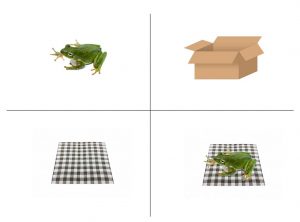This post is also available in Dutch.
With eye-tracking technology the eye is thought to give researchers a window into the mind. Curious? Then read, learn, and be surprised.

“Eyes can say more than words” Picture taken by Gratisography (License:CC0 1.0)
Nowadays technology is very advanced, omnipresent, and invisible. Because we can’t get enough of it, let me introduce one more type of technology: eye-tracking. How does eye-tracking work and how can we learn about language and the mind from our eyes?
What is eye-tracking and what can we do with it?
Basically, eye tracking measures gaze direction which tells us about the eye’s movements (saccades) as well as stops (fixations). Most modern eye-trackers are small cameras that are pointed at someone’s face and use infrared light (not harmful) to detect the center of the pupil and corneal reflections of the eyes. This detection makes following someone’s gaze possible.
Eye movements are controlled by the brain to get the visual information that it is seeking. Thus, eye movements are linked to how the brain is functioning and depends on the intention or attention of an individual. Therefore, eye-tracking can be used in various fields, including cognitive science, psychology, human-computer interaction, marketing research, gaming, and medical research.
Your eyes are full of language…
…said once the American poet Anne Sexton. Actually, these words ring true. Eye movements can be monitored, for instance, while people listen to speech. If we present some static image and make people listen to instructions about the picture, we can measure where people look and find out how people process language.
For example, imagine a screen like shown below with four pictures: a frog, a napkin, a frog that’s on the napkin, and a box. You are looking at those pictures and you suddenly hear, “put the frog on the napkin into the box”. What would happen to you here? When you hear the first part of the sentence, “put the frog on the napkin,” you would probably look at the frog and then at the napkin. Then, you hear the rest of the sentence and realize you made a mistake. Whoops! Now you have to get your eyes to the right frog (i.e., the one that is on the napkin) and then over to the box. This is at least what many people did while taking part in this experiment. This example of a so-called visual world paradigm shows us how we process a sentence in real time.

“Example of a Visual World Paradigm” Picture created by Francie.
Eye-tracking can be a great tool that lets us look into people’s minds and helps us understand how people comprehend language. This technology is actually coming to your smartphone. In fact, smartphones already use simply the camera to detect your face and eyes, so you might not notice the transition to eye-tracking. Eye-opening, isn’t it?
This blog was written by Francie. Edited by Roselyne and Marisha.
